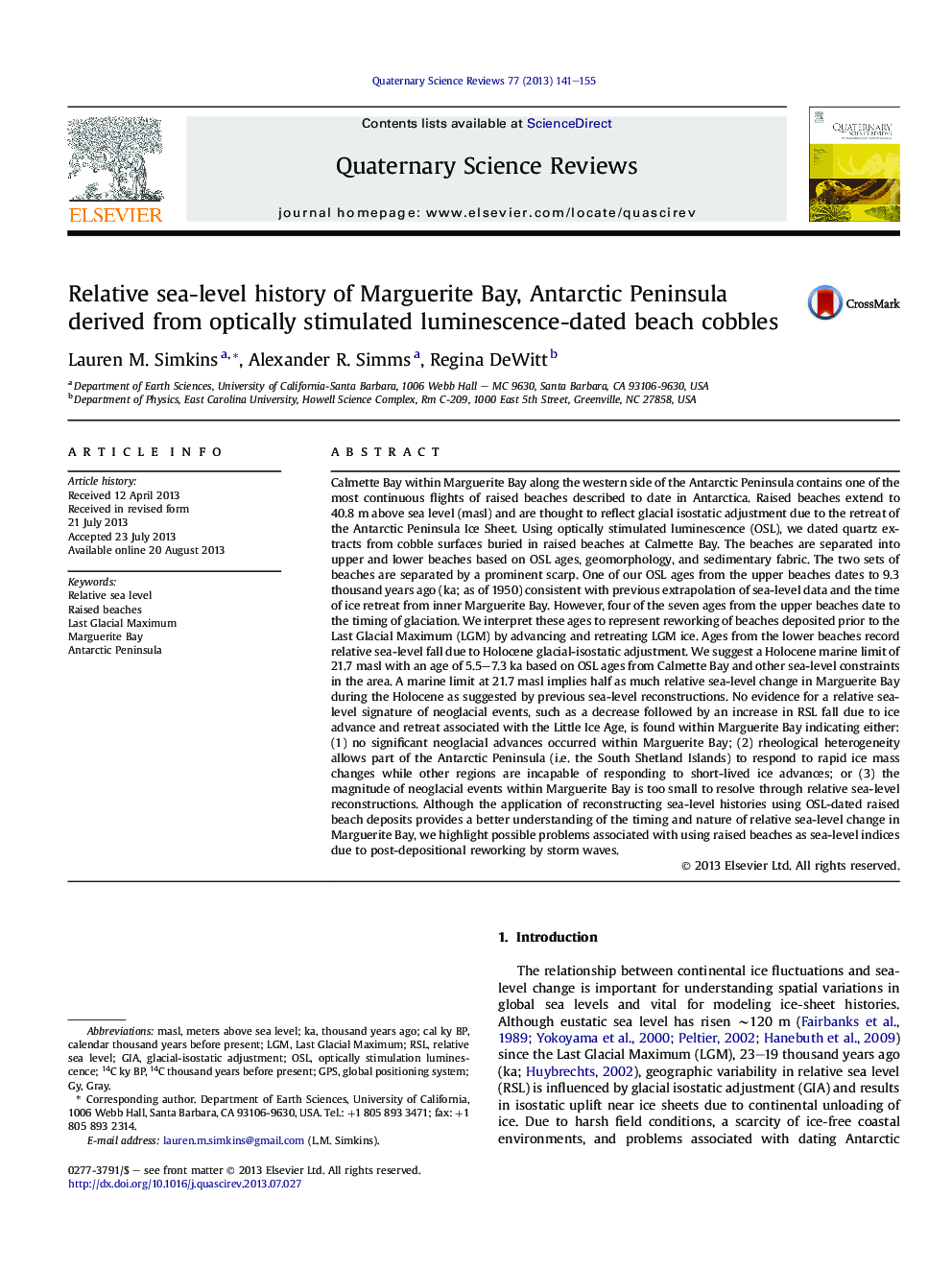| کد مقاله | کد نشریه | سال انتشار | مقاله انگلیسی | نسخه تمام متن |
|---|---|---|---|---|
| 6446553 | 1640857 | 2013 | 15 صفحه PDF | دانلود رایگان |
عنوان انگلیسی مقاله ISI
Relative sea-level history of Marguerite Bay, Antarctic Peninsula derived from optically stimulated luminescence-dated beach cobbles
ترجمه فارسی عنوان
تاریخ مربوط به سطح دریا خلیج مارگریت، شبه جزیره قطب جنوب مشتق شده از کوبیل ساحل ساحلی ساطع شده از لحاظ اپتیکی
دانلود مقاله + سفارش ترجمه
دانلود مقاله ISI انگلیسی
رایگان برای ایرانیان
کلمات کلیدی
LGMRSLOSLGIALast glacial maximum - آخرین حداکثر یخبندانglacial-isostatic adjustment - تنظیم یخچال-ایزواستاتیکGray - خاکستریMarguerite Bay - خلیج مارگریتGPS - سامانه موقعیتیاب جهانیRelative Sea Level - سطح دریایی نسبیRaised Beaches - سواحل بریده شدهGlobal Positioning System - سیستم موقعیت یاب جهانیAntarctic Peninsula - شبه جزیره قطب جنوبMASL - ماسکmeters above sea level - متر بالاتر از سطح دریا
موضوعات مرتبط
مهندسی و علوم پایه
علوم زمین و سیارات
زمین شناسی
چکیده انگلیسی
Calmette Bay within Marguerite Bay along the western side of the Antarctic Peninsula contains one of the most continuous flights of raised beaches described to date in Antarctica. Raised beaches extend to 40.8Â m above sea level (masl) and are thought to reflect glacial isostatic adjustment due to the retreat of the Antarctic Peninsula Ice Sheet. Using optically stimulated luminescence (OSL), we dated quartz extracts from cobble surfaces buried in raised beaches at Calmette Bay. The beaches are separated into upper and lower beaches based on OSL ages, geomorphology, and sedimentary fabric. The two sets of beaches are separated by a prominent scarp. One of our OSL ages from the upper beaches dates to 9.3 thousand years ago (ka; as of 1950) consistent with previous extrapolation of sea-level data and the time of ice retreat from inner Marguerite Bay. However, four of the seven ages from the upper beaches date to the timing of glaciation. We interpret these ages to represent reworking of beaches deposited prior to the Last Glacial Maximum (LGM) by advancing and retreating LGM ice. Ages from the lower beaches record relative sea-level fall due to Holocene glacial-isostatic adjustment. We suggest a Holocene marine limit of 21.7Â masl with an age of 5.5-7.3Â ka based on OSL ages from Calmette Bay and other sea-level constraints in the area. A marine limit at 21.7Â masl implies half as much relative sea-level change in Marguerite Bay during the Holocene as suggested by previous sea-level reconstructions. No evidence for a relative sea-level signature of neoglacial events, such as a decrease followed by an increase in RSL fall due to ice advance and retreat associated with the Little Ice Age, is found within Marguerite Bay indicating either: (1) no significant neoglacial advances occurred within Marguerite Bay; (2) rheological heterogeneity allows part of the Antarctic Peninsula (i.e. the South Shetland Islands) to respond to rapid ice mass changes while other regions are incapable of responding to short-lived ice advances; or (3) the magnitude of neoglacial events within Marguerite Bay is too small to resolve through relative sea-level reconstructions. Although the application of reconstructing sea-level histories using OSL-dated raised beach deposits provides a better understanding of the timing and nature of relative sea-level change in Marguerite Bay, we highlight possible problems associated with using raised beaches as sea-level indices due to post-depositional reworking by storm waves.
ناشر
Database: Elsevier - ScienceDirect (ساینس دایرکت)
Journal: Quaternary Science Reviews - Volume 77, 1 October 2013, Pages 141-155
Journal: Quaternary Science Reviews - Volume 77, 1 October 2013, Pages 141-155
نویسندگان
Lauren M. Simkins, Alexander R. Simms, Regina DeWitt,
